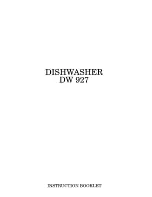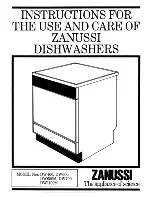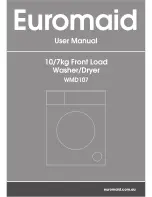
Warning and Safety instructions
12
Recommending chemical cleaning agents does not mean that the
machine manufacturer is responsible for the influences of these
agents on the laundry and the washing machine. Please note that un-
disclosed product changes by the manufacturers of these agents
may affect the quality of the wash result.
Only use dyes, dye removers and descalers suitable for use in a
washing machine. The manufacturer’s instructions on the packaging
must be observed.
Colour run and dye removers contain sulphur compounds which
can cause damage such as corrosion. Do not use these products in
this machine.
Check the wash result of laundry contaminated with biological oils
or greases. Inadequately washed laundry can cause spontaneous
combustion during the drying process. Use special detergents or
wash programmes for this kind of laundry.
Do not use a pressure washer or hose to clean the washing ma-
chine.
Chlorine and component damage
Frequent use of chlorine products increases the risk of damage to
components.
The use of substances containing chlorine, such as sodium hypo-
chlorite and chlorine bleach in powder form, can however result in
damage of the protective layer of stainless steel and corrosion on
components. Therefore, refrain from using substances containing
chlorine. Use oxygen-based bleaching agents instead.
If, however, chlorine bleaching agents are used, an anti-chlorine treat-
ment must always be carried out. Otherwise, both the washing ma-
chine components and the laundry may suffer persistent and irrepar-
able damage.
Anti-chlorine treatment must be carried out immediately after
chlorine bleaching agents have been used. Hydrogen peroxide as
well as oxygen-based detergents and bleaching agents are suitable
for anti-chlorine treatment. The suds must not be drained in between.
Treatments with thiosulphates can result in gypsum-like deposits par-
ticularly when used in combination with hard water. This gypsum can
build up in the washing machine or cause incrustations on the laun-
dry. Treatment with hydrogen peroxide is recommended over treat-
ment with thiosulphates because hydrogen peroxide neutralises
chlorine.
The exact dispensing quantities and the treatment temperatures re-
quired must be set and tested on site in accordance with the dis-
pensing recommendations of the detergent and cleaning agent man-
ufacturers. The laundry must also be tested to check whether it con-
tains any active chlorine residues.













































